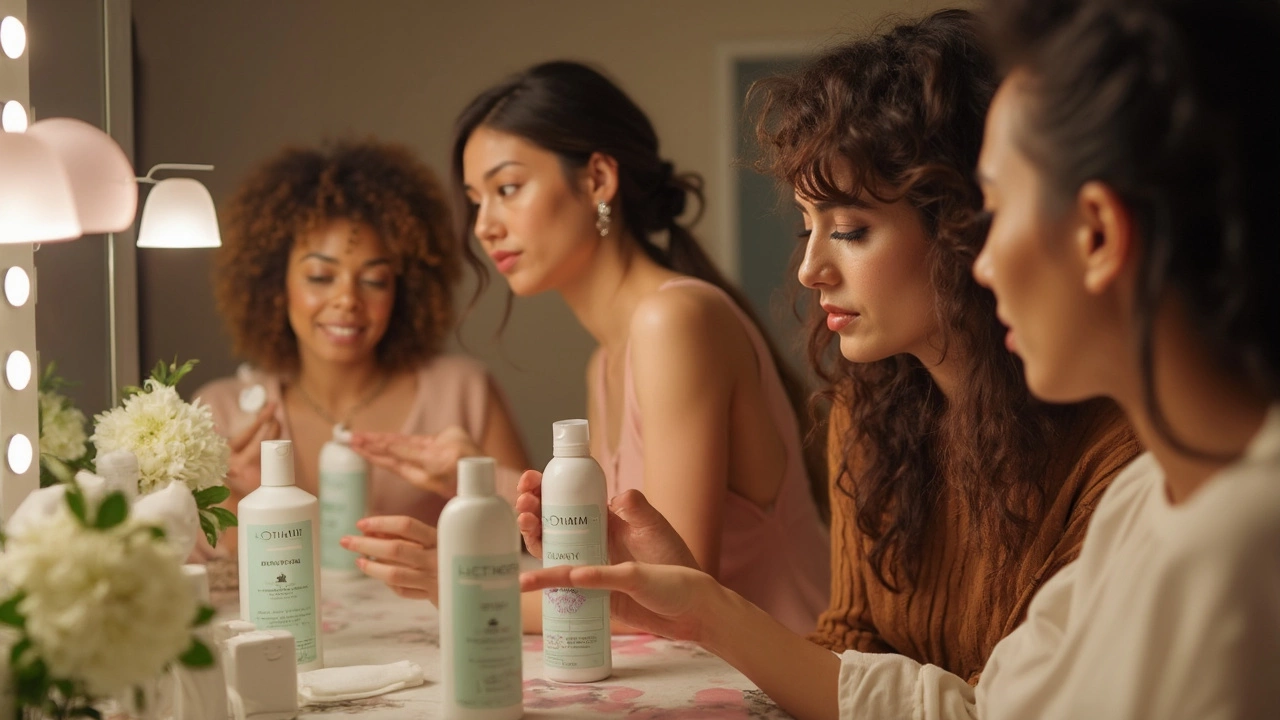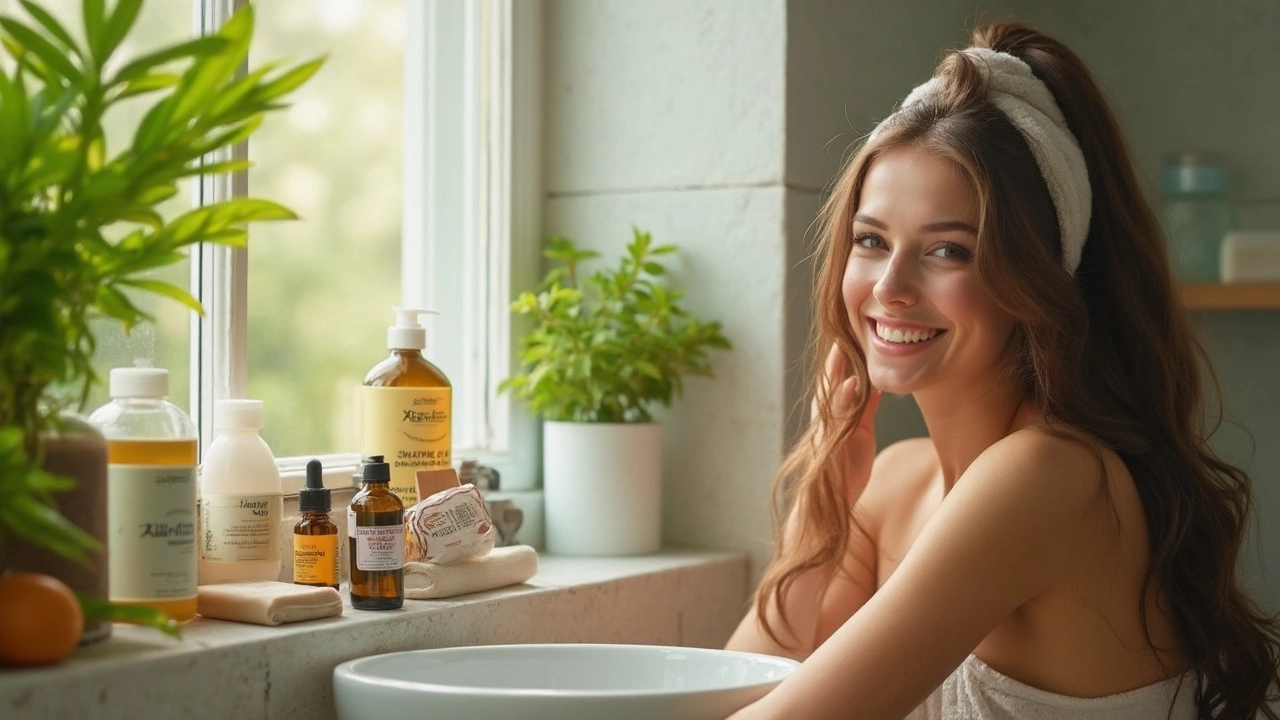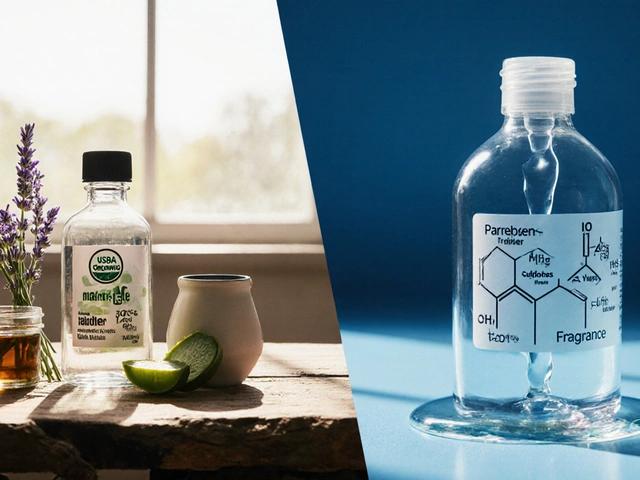You can spend a fortune on fancy bottles, but if you’re using the wrong stuff, your hair won’t thank you. Healthy hair starts with what you put on it—literally. If your shampoo or conditioner is packed with harsh sulfates, heavy silicones, or drying alcohols, you’re probably doing more harm than good, no matter what the label claims.
Most people only check if a product says “moisturizing” or “repairing,” but the secret sauce is in the ingredient list. Ever squinted at all those weird words and wondered what any of them mean? There are a few key things to spot and a couple of red flags to dodge. It’s not complicated, but it can make a massive difference—think hydrated, bouncy hair instead of dull, brittle strands.
- Why Healthy Hair Starts in the Shower
- Decoding Ingredients: What Actually Matters
- Nature vs. Chemicals: Can You Really Tell?
- Tips That Make a Real Difference
Why Healthy Hair Starts in the Shower
If your hair never seems to look its best, your shower routine might be the real reason. Water, the products you reach for, and even how you wash can totally shape your hair health. Think of this as ground zero: mess it up here, and your hair pays the price all week.
Here’s a surprising bit—the average scalp has about 100,000 hair follicles, and each follicle needs a clean, balanced environment to grow healthy strands. If you use shampoos loaded with sulfates, you’re stripping not just dirt and oil, but the natural moisture your scalp needs. According to a study from the International Journal of Trichology, regular use of harsh surfactants like sodium lauryl sulfate can trigger irritation and even hair loss over time.
Not convinced? Check this quick breakdown of what often happens in everyday showers:
| Common Practice | Impact on Hair |
|---|---|
| Hot water rinse | Dries out scalp and weakens strands |
| Daily shampooing | Strips essential oils, leading to dullness |
| Leaving conditioner on roots | Weighs hair down, can clog follicles |
| Ignoring scalp buildup | Slows growth, causes itchiness |
Want better hair? Swap out harsh cleansers for gentle, sulfate-free ones. Wash with lukewarm—not steamy hot—water. And massage your scalp for a minute or two to boost blood flow (seriously, it helps).
- Pick a shampoo that’s clear or lightly colored. Super bright or pearly ones often mean extra additives (and not in a good way).
- Conditioner belongs mid-length to ends—roots don't need it.
- Only shampoo every other day if your scalp isn’t oily. Your hair will adjust, and you’ll notice less frizz and breakage.
How you treat your hair from the second you turn on the tap sets the stage for shine, bounce, and actual growth. Pay attention in the shower, and you’ll see better hair, guaranteed.
Decoding Ingredients: What Actually Matters
Here’s the thing: most people buy hair care stuff based on smell or some wild promise on the bottle. But if you really want healthy hair, it’s all about what’s actually inside. Flip those bottles over. Your hair doesn’t care about a fancy scent. It cares about a few key ingredients, and knowing them can totally change how your hair looks and feels.
- Natural oils: Look for coconut, argan, jojoba, or almond oil. These mimic your scalp's own oils and help lock in moisture. If your hair feels dry or frizzy by lunch, natural oils in your routine are a game changer.
- Proteins: Hydrolyzed wheat, silk, or keratin proteins fill in gaps and help strengthen weak, damaged strands. But don’t overdo it—too much protein can make hair stiff and snap-prone.
- Humectants: Ingredients like glycerin and aloe vera draw water into your hair. These are good if your hair easily dries out, especially in winter or if you use heat on your hair a lot.
- Panthenol (Vitamin B5): Super common in shampoos and conditioners, it helps add body and shine and gives hair a bit more strength.
Now, watch out for these red-flag ingredients:
- Sulfates (like sodium lauryl sulfate): These are tough detergents. They strip away dirt but also pull out natural oils your scalp needs, especially if you wash daily.
- Parabens: Used to preserve, but lots of people avoid them just to play it safe. There’s some research connecting parabens to hormone disruption, even though the science isn’t totally settled.
- Silicones (like dimethicone): These can make hair look smooth, but heavy ones can build up and make hair limp or greasy over time unless you use a sulfate shampoo to rinse it out—which is its own problem.
- Alcohols: Not all are bad (fatty alcohols like cetyl are actually moisturizing), but the short-chain types like isopropyl alcohol will dry your hair out fast.
| Helpful Ingredients | Ingredients to Avoid |
|---|---|
| Coconut Oil, Argan Oil, Panthenol, Glycerin, Aloe Vera, Hydrolyzed Proteins | Sulfates, Parabens, Heavy Silicones, Short-Chain Alcohols |
If this feels overwhelming, just check the first five ingredients—those make up most of what’s in any bottle. Want the healthiest for your hair? Pick stuff with real oils and humectants up top, and fewer chemicals at the start. Your hair really will show the difference.

Nature vs. Chemicals: Can You Really Tell?
The natural label on a shampoo bottle seems like a green light for healthy hair, right? But here’s the wild part: not all natural things are good for you, and not all chemicals are bad. Everything is made of chemicals—even water and the vitamins your hair needs. The real trick is figuring out which ones actually help keep your hair at its best.
Let’s get specific. Some natural oils (like coconut oil, argan oil, or jojoba) have real science backing them up. They moisturize, help repair damage, and even soothe dry scalps. On the other hand, lemon or undiluted essential oils can dry you out or cause irritation, especially if you’ve got sensitive skin. It’s all about how the ingredient is used, not just where it comes from.
On the flip side, common ‘chemical’ ingredients like panthenol (a type of vitamin B5) and glycerin are actually awesome for locking in moisture. The problem comes when you bump into harsh detergents like sodium lauryl sulfate. That’s the one that gives you crazy foam, but it strips away way too much oil—even the stuff your scalp needs. Same with heavy silicones like dimethicone. They make hair look shiny for a while but can build up and weigh your hair down if you’re not careful.
- Hair care products with fewer harsh sulfates and simple, proven moisturizers tend to be best for everyday use.
- If you spot tons of hard-to-pronounce ingredients, look them up! Sometimes they’re good (like biotin or hydrolyzed protein). Other times, you’re looking at cheap fillers or things that actually dry your hair out.
- Switch products if your scalp is getting itchy or your hair feels coated—your products could be to blame.
Don’t get tricked by “all-natural” marketing or scared off by every long ingredient name. A healthy dose of curiosity (and maybe a quick check on your phone) can save you a lot of bad hair days.
Tips That Make a Real Difference
Getting healthier hair isn’t about grabbing whatever’s trending on social media. Here’s what actually moves the needle, straight from experts and real-life results.
- Hair health loves moisture. Regularly using a hydrating conditioner, preferably with ingredients like glycerin or coconut oil, helps stop breakage and split ends. Dry hair cracks and splits, so keep it moisturized—especially after washing.
- Switch to gentle shampoos. Skip products with sulfates if your hair feels stripped after you wash. Instead, look for mild cleansers like sodium cocoyl isethionate or use sulfate-free options. This makes a legit difference for anyone with a dry or sensitive scalp.
- Limit heat styling. If you’re blasting your hair with a flat iron or blow dryer every day, try cutting back. Heat weakens hair proteins, making it more prone to frizz and breakage. When you do use hot tools, always slap on a heat protectant spray first.
- Scalp care is non-negotiable. Healthy hair needs a healthy scalp. Massage your scalp every time you shampoo. This boosts blood flow and helps with growth. If you see flakes, try switching to a shampoo with zinc pyrithione or tea tree oil.
- Don’t brush wet hair aggressively. Wet hair is way more fragile. Use a wide-tooth comb or your fingers, starting from the ends and moving up. If you’re rough, you’ll snap strands and invite split ends.
- Pay attention to your trim schedule. You don’t need to chop your hair every six weeks like some myth suggests, but skipping trims for six months isn’t great either. Getting rid of split ends keeps strands from splitting further up, which makes hair look and feel way healthier.
- Read labels—not hype. Ignore big claims on the front and check the back instead. If the ingredient list starts with water and then a bunch of natural oils or proteins, that’s a good sign. Lots of alcohols, dyes, or unpronounceable preservatives? Probably not the best pick for most people.
Following these tips isn’t hard, but it takes a little attention. They’re the kind of changes that actually matter for how your hair looks and feels in the long run.


